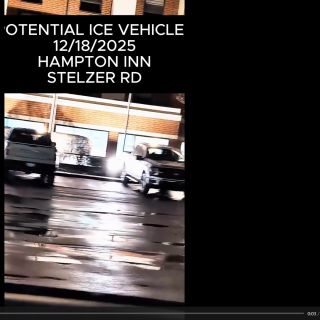Six out of ten people in jail have not been convicted of a crime. They simply cannot afford to pay their cash bail and are awaiting their court trials. The financial implications for taxpayers include an estimated quarter of a billion dollars spent each year to incarcerate these folks.
For the accused who can’t afford to pay cash bail, the financial ramifications of sitting in jail compound each other. They could suffer the loss of their job, an eviction, loss of custody of their children, additional health concerns, or a long-term impact on their credit rating.
Cash bail is paid to the court by the accused to get out of jail and returned when they appear for trial. Bail bondsmen, essentially loan companies, are often used to come up with the amount, but they charge on average a 10% nonrefundable fee.
This past November 8, voters overwhelmingly passed Issue 1, an Ohio Constitutional amendment which allows judges, in the name of public safety or if the accused is deemed a flight risk, to set high bail amounts to keep defendants in jail. It reverses an Ohio Supreme Court ruling from earlier this year that sided with state law which prohibited a court from setting excessive bail.
Issue 1 goes into effect in December and critics are saying this could significantly increase the number of people in Ohio jails.
The ACLU of Ohio and host of other activist groups such as the Columbus-based Juvenile Justice Coalition had urged voters to reject Issue 1. They had made their case with simple logic: Those with money can still get out, even if they pose a danger to others, and those who are poor remain locked behind bars even if they are innocent.
Proponents of Issue 1, such as Governor DeWine and the Fraternal Order of Police of Ohio, had argued that too many career criminals were exploiting the justice system’s “presumption of innocence” to commit additional crimes.
Democrat State Senator Cecil Thomas (D-9) argued that prosecutors already can keep dangerous suspects in jail, and a judge can also decide to hold a defendant without bail.
What is often forgotten, says the ACLU of Ohio, is how roughly 12,000 Ohioans on any given day are held in jail yet legally innocent. They simply can’t afford their cash bail amount.
“We know that cash bail does not keep us safe, and the system disproportionately punishes and targets Black and Brown Ohioans, as well as people from economically disadvantaged communities,” stated the local ACLU’s Policy Director Jocelyn Rosnick and Policy Counsel Patrick Higgins, in a press release the day after the election. “This is not the outcome we wanted, but the fight for true bail reform is not yet over.”
The ACLU of Ohio and other activist groups say there are better solutions on how to fix Ohio’s pretrial justice system.
They cite Ohio House Bill 315 and its identical companion bill Senate Bill 182, which were introduced earlier in the current legislative session and appear to have bipartisan support.
HB 315, for instance, guarantees everyone who is arrested will receive a release decision within 48 hours. SB 182 does not eliminate cash bail, but instead caps it at 25 percent of the accused’s monthly net income.
At a town meeting on September 15 to generate interest in the bills, the Ohio ACLU’s Nate Brown shared that this is an excellent time to see these bills pass. The Ohio Legislature’s lame duck session started last week and will continue until before Christmas.
Passage of these two bills would have a significant impact on the overall justice system. People who are held in jail are not able to work on their own defense. They do not have access to libraries for research or the ability to attend meetings with their defense team. Few public defenders will meet regularly with their incarcerated clients. Public defenders rarely (if ever) answer their client’s phone calls, this according to some incarcerated people, including Felicia Sullivan and Christopher Monahan, who shared their stories by calling into the town hall.
Enoch Jaeger, who shared his story in person, explained that the longer a person sits in jail with no hope of being released on bail, the more they are willing to accept a plea deal for a crime they did not commit. This leads to more people incarcerated in a state penal system that is already one of the most populated in the country.
Columbus stopped using cash bail for people charged with nonviolent crimes. The cash bail experience and procedures vary widely in Ohio’s 88 counties.
Significantly reducing the use of cash bail is the first step in curing the problem of mass incarceration in the state of Ohio. Surrounding states have passed or are considering reform efforts. See their progress here: Illinois Kentucky Indiana Michigan. The other states have seen many of the same problems experienced by Ohio and the people held in jail prior to trial.
Other methods used by courts to encourage appearance at trial include recognizance bonds where a person signs a promise to pay an amount if they don’t show up, ankle monitors that track their location, regular drug testing, and other check-ins. Some courts and nonprofits are starting to offer transportation, childcare, and reminder services that help people make it to their hearings.
A well-funded grassroots effort initiated in 2017, The Bail Project, is utilizing charitable dollars to bail people out of jail. In its 2021 annual report, “To date [we] posted over $46 million in bail for nearly 18,000 people, preventing approximately 784,845 days of incarceration and saving local jurisdictions roughly $61 million in taxpayer dollars.” There are chapters in Cleveland and Cincinnati, but not Columbus.
“If you’re rich, you buy your freedom and you buy the presumption of innocence,” said The Bail Project’s founder and longtime public defender Robin Steinberg to NBC News. “If you are not rich you can’t buy your freedom and you don't get the presumption of innocence.”
Residents of Ohio can call or write their state representatives and state senators to weigh in on the bills under consideration. They can track the progress of the bills at My Ohio Legislator.



